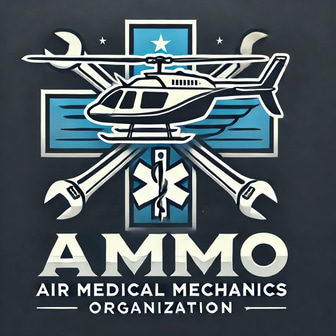Disclaimer: The information provided is for general informational and educational purposes only. Nothing contained herein shall be construed as guidance for, or a basis of, compliance of any regulatory or certification standards. This information must not be used as the sole basis for the certification, inspection, repair, modification, or return to service of any aircraft, product, or component. Users are responsible for consulting appropriate, approved technical data, regulatory authorities, before performing any maintenance, modification, or return-to-service actions.
Airworthiness Directives (ADs) and Alternative Methods of Compliance (AMOCs)
Airworthiness Directives (ADs) and Alternative Methods of Compliance (AMOCs) play a critical role in ensuring aviation safety and regulatory compliance. ADs are issued by the FAA to address unsafe conditions in aircraft, engines, propellers, and appliances, requiring operators to take corrective actions. In cases where compliance with an AD is impractical or requires an alternative approach, AMOCs provide FAA-approved modifications that still meet the intent of the directive. Understanding these regulations is essential for operators, maintenance personnel, and airworthiness authorities to keep aircraft in compliance while maintaining operational efficiency.
General AD and AMOC Regulations
8040.5 – This document establishes the FAA’s procedural framework for issuing, tracking, and enforcing ADs. It outlines how ADs are developed, how compliance is monitored, and the process for requesting AMOCs when alternative solutions are necessary.
1320.1E VS SUP 1 – This supplement provides updates to regulatory procedures and compliance documentation for ADs and AMOCs. It ensures that operators, manufacturers, and repair stations follow consistent processes in tracking and applying corrective actions under an AD.
8040.1C – This guidance outlines the FAA’s approach to determining airworthiness and maintaining oversight of AD compliance. It describes the enforcement measures taken when operators fail to comply with ADs or improperly request AMOCs.
AMOC and AD Compliance Processes
8110.100B – This document outlines the FAA’s policy and approval process for AMOCs, explaining how alternative compliance methods can be evaluated and approved. It also provides detailed guidance for applicants on submitting AMOC requests and ensuring they meet regulatory safety requirements.
8110.103B – This circular details FAA-approved procedures for modifying aircraft in compliance with ADs while using AMOCs. It explains how operators can maintain regulatory approval when implementing alternative solutions to FAA-issued safety requirements.
8110.117A – This document explains how operators can request AMOCs for aging aircraft structures and complex modifications. It includes specific examples of approved AMOCs and details on how the FAA evaluates requests for structural modifications that differ from AD requirements.
AD-Specific Advisory Circulars
AC 20-176A – This advisory circular provides guidance on tracking and maintaining compliance with recurrent ADs. It is particularly useful for aircraft operators managing a fleet with multiple AD requirements and needing an organized approach to compliance.
AC 39-10 – This document explains how the FAA evaluates potential safety risks before issuing an AD. It also outlines the criteria used to determine whether an AD is mandatory and what factors influence compliance deadlines.
AC 39-7D – This circular provides guidance for interpreting and implementing AD requirements. It includes operator responsibilities for inspections, recordkeeping, and modifications required under specific ADs.
AC 39-9 CHG 2 – This advisory explains the process for requesting AMOCs and how the FAA evaluates alternative compliance pathways. It also details situations where an AMOC may be denied and provides case studies of previously approved AMOCs.
Manufacturer-Specific AMOC Resources
Airbus AMOCs – Airbus maintains a dedicated AMOC resource page, providing operators with approved compliance alternatives for its aircraft. It ensures that Airbus aircraft meet FAA-mandated ADs while allowing for operational flexibility.
Bell AMOCs – Bell Helicopter provides a centralized list of AMOCs and compliance bulletins. This resource helps Bell aircraft operators stay updated on AD requirements and approved alternative solutions.
Legal Interpretations of ADs and AMOCs
Airworthiness Directives Legal Interpretation (2016) – This legal interpretation clarifies the FAA’s authority in enforcing ADs and the consequences of non-compliance. It also explains the legal requirements for operators when submitting AMOC requests.
IR-M 8040.1C – This document defines the FAA’s investigation and enforcement policies regarding non-compliance with ADs. It outlines the penalties for failure to adhere to mandated airworthiness requirements and provides guidance for resolving compliance disputes.
© 2024. All rights reserved.
Disclaimer: The information provided by the Air Medical Mechanics Organization (AMMO) is for general informational and educational purposes only. It has not been reviewed, approved, or accepted by the Federal Aviation Administration (FAA), any Organization Designation Authorization (ODA) holder, Type Certificate (TC) holder, Supplemental Type Certificate (STC) holder, or any aircraft or component manufacturer.
Nothing contained herein shall be construed as guidance for, or a basis of, compliance with FAA regulations, manufacturer-approved data, type certificate or supplemental type certificate requirements, or any other regulatory or certification standards. This information must not be used as the sole basis for the certification, inspection, repair, modification, or return to service of any aircraft, product, or component.
Users are responsible for consulting appropriate, approved technical data, regulatory authorities, and manufacturer guidelines before performing any maintenance, modification, or return-to-service actions. AMMO assumes no liability for the use or misuse of any information provided
